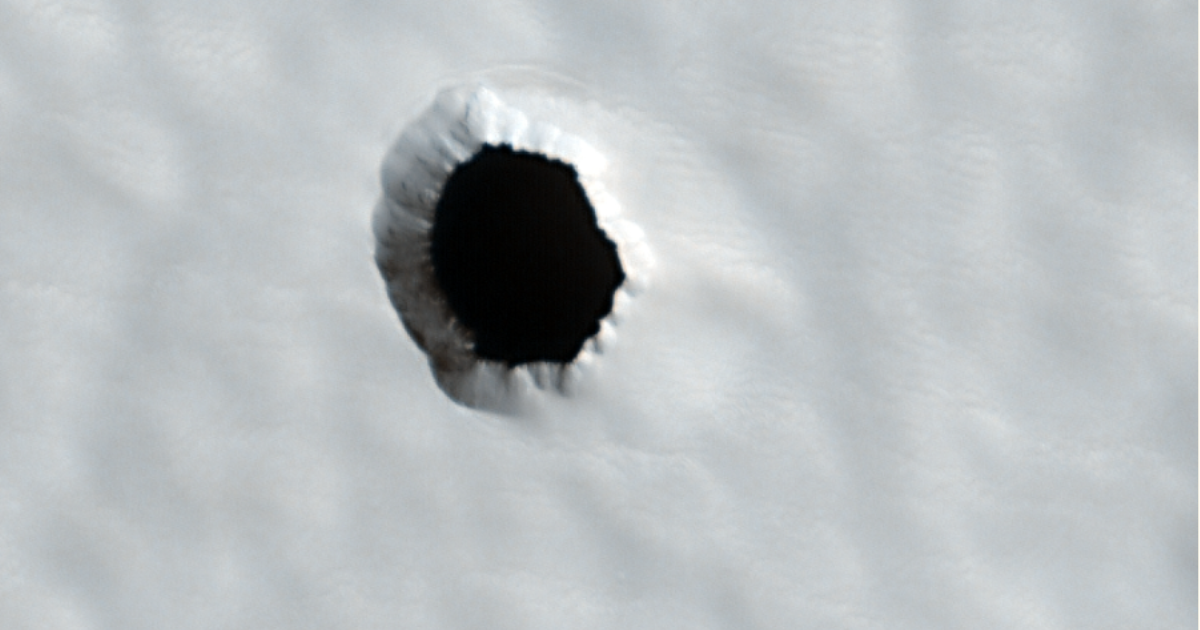
As the Mars Reconnaissance Orbiter (MRO) from NASA continues to gather information about the red planet, it is finding a number of mysterious things that leave scientists scratching their head.
One of the latest is a high-resolution image of a fairly small circular pit in the ground.
The hole in the ground is only a few yards across, but it stands out because it is very round and deep enough that the MRO is unable to determine what is in it.
It is located near Arsia Mons, which is a massive (but inactive) volcano. This volcano is one of the largest in the solar system, measuring almost 12-miles tall and over 270-miles in diameter.
Due to its position near this (and other) volcanos, there is speculation that the pit was formed from volcanic activity in the past.
Similar things form here on Earth near volcanoes, and are typically from lava tubes where molten rock travels. On Earth, these tubes often do not remain in place due to weather, tectonic plate movement, and other factors.
On Mars, however, they may remain for significantly longer, which may be why we were able to find this one.
Surface formations like this one are intriguing to scientists for many reasons. One of which is that it gives them the opportunity to study how geological activity took place in the distant past.
Some scientists, however, are suggesting that this may actually indicate that Mars is still volcanically active and not a ‘dead planet’ as has long been believed.
This coincides with other studies suggesting Mars is more active than we may think.
One of the most exciting things being discussed is whether this (and other similar) pits on Mars could someday serve as a shelter for Astronauts.
With the relatively small opening and potentially larger tunnels beneath, this could be an excellent place for humans to take cover from excessive temperatures, dust storms, and other threats.
Having this natural protection available would be especially useful when long-term explorers first arrive and begin building other structures.
Building structures directly over this type of pit would offer many advantages not just for survival, but also for studying below the surface of Mars.
Of course, it will be necessary to send a rover or other probe to look at this pit up close before any real plans can be made.
This is an exciting find for the future of Mars exploration.